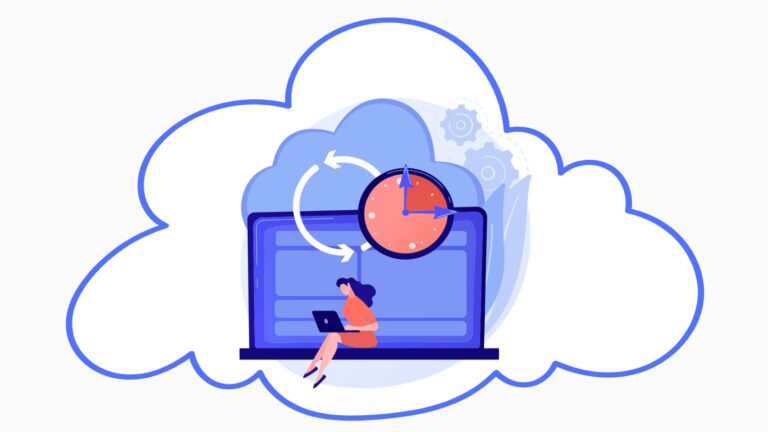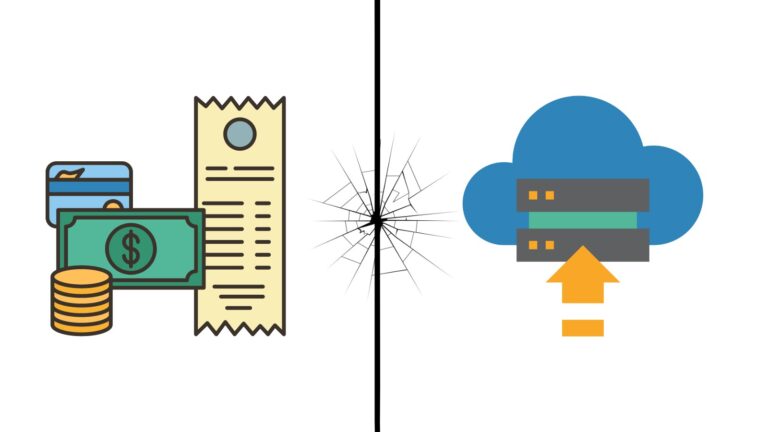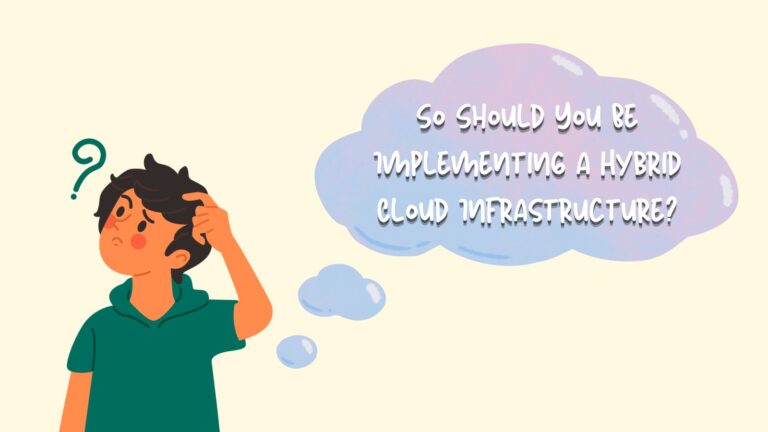One of the leading trends in the business world has been adopting a hybrid cloud platform. The 2022 Global Hybrid Cloud Trends Report by Cisco notes that 82 per cent of IT leaders have adopted the hybrid cloud. Further, according to a report by Allied Market Research, the global hybrid cloud market size is projected to reach USD 171.926 billion by 2025, with a CAGR growth rate of 21.7 per cent from 2018 to 2025. These statistics demonstrate the power hybrid clouds hold in the 21st century. However, what does implementing a hybrid cloud mean? Amidst the hype for hybrid clouds, not everyone has made an effort to see the whole picture. Is it faultless? Or are there some disadvantages? If so, can measures be taken to prevent them? This article will explain the micro and macro elements of hybrid cloud infrastructure.
Breaking Down The Good and The Bad
A hybrid cloud integrates a public and private cloud into one infrastructure. Companies that adopt such a system will find that they can enjoy the advantages of a public cloud that can easily increase scalability, with the benefits of a private cloud that provides remote access and ensures more data security is in place for the corporation. It increases flexibility, optimises processes, offers more control and effectively improves the overall efficiency of the business. Here are three of the most significant advantages and disadvantages.
Pro 01: Scalability

One advantage of a hybrid system is scalability. Unlike the traditional on-premise system, which only allows those in the factory to access data, requiring the relevant personnel to be present at the location, hybrid clouds provide the flexibility to use it from anywhere. As a result, additional equipment will not be required when a company scales and extends its operations. Instead, all teams can be integrated with one go, allowing managers to oversee operations in a different country. Moreover, a hybrid cloud provides organisations with more control. It is up to the manager to decide whether they want a third party to control it or prefer their mechanism. In other words, a hybrid cloud offers multiple choices instead of forcing companies to adapt to one.
Pro 02: Financial Feasibility

Investing in a hybrid cloud infrastructure requires companies to consider the big picture. In the long run, a hybrid system helps organisations cut unnecessary costs and automate a range of mundane roles. It significantly eliminates expenses associated with updates and maintenance on physical equipment. In other words, it is financially sustainable for an SME to adopt a hybrid cloud as it eliminates the enormous costs that must be invested in scaling upwards. Thus, an organisation can receive a high ROI. Moreover, hybrid clouds offer more control, especially by allowing managers to decide which data they want on on-premise servers, so they can selectively pay for the cloud sources they wish to use.
Pro 03: Disaster Recovery

Considering that hybrid clouds provide data integrity by providing companies with the flexibility of storing data either in an on-premise system or on the cloud, recovering data in case of a breach becomes easy. This is because data is constantly backed up in the cloud, ensuring any lost information can be easily recovered. In addition to being backed up locally, another backup of the backup made is replicated off-site. In other words, a company with a hybrid cloud has redundant copies of data in multiple locations. For companies that choose to store data on both a public and private infrastructure, a portion of their data will be safe in case one of them fails. Moreover, since data is stored in different compartments, if one part is infiltrated, it does not mean all your data is subject to risk. In other words, in the cloud, each component is encrypted, thereby ensuring that companies do not have to halt operations completely. Thus companies can significantly reduce downtime.
Con 01: Complicated

In one of the surveys carried out by Forrester, around 1,000 chief information security officers (CISOs) participated. The survey found that the complexity of a hybrid cloud makes it one of the main reasons security becomes a concern. While a hybrid cloud is a great way to ensure data is not lost, it will depend on the type of vendor at the end of the day. Since a hybrid cloud embraces the features of different types of infrastructures, it is easy to get too complicated. As a result, engineers may find it challenging to design and implement robust security protocols. This is especially a concern among companies that handle a large amount of sensitive information.
Con 02: Expensive Implementation

While in the long term, a hybrid cloud has proved to be cost-effective, it is an extremely costly investment at the end of the day. It is comparatively more expensive than a fully private or public cloud, making it unavailable for SMEs. The cost will greatly depend on the range of flexibility, level of control and customisation a company requires. The higher it is, the more expensive it gets. The expensive cost is attributed to the additional hardware required to implement such features since hybrid clouds have no choice but to maintain and invest in on-premise hardware.
Con 03: Lack of Visibility

A report commissioned by Gigamon found that it was difficult for companies to maintain visibility in a hybrid cloud. This is one of the core reasons for the increased security risks. Since data is stored in multiple locations, every time it is shared, it is vulnerable to security breaches every time it is shared. Network engineers, in particular, need to implement reliable hardware to make a robust hybrid cloud infrastructure. Even if this is managed, monitoring it is an equally daunting task. As the point of remote access is to ensure only authorised personnel can access such information, issues may surface when uniform user authentication is required at multiple points.
How Can Cerexio Help Manage and Maximise the Value of a Hybrid Cloud?

Finding the right vendor when implementing a hybrid cloud infrastructure is crucial to successfully implementing it. Cerexio is one of the leading technology vendors in South Asia and the world that harnesses the power of industry 4.0 technology. It is renowned for developing hybrid cloud-driven data-tackling solutions that perfectly fit client-defined information needs. Our solutions can be utilised seamlessly in interconnected cloud environments that allow you to process your big data and refine your data-tackling efforts with mission-oriented insights. Efficiently streamline your industrial operations by eliminating system downtimes. Find anomalies at their earliest stages, as our robust infrastructure can help your team proactively react to business needs and client demands. It is also compatible with extended networks of end users by enabling multiple software services. Cerexio executes security and privacy protocols in unison, maximising the safety of your sensitive data. Easy scale up your business with minimal interruptions, financial or otherwise. Unlock the unlimited benefits big data analytics offers by fully controlling your data and analytics system.
Connect with us to learn how we can further help manage and maximise the value of your hybrid cloud system.
So Should You Be Implementing a Hybrid Cloud Infrastructure?

No technological solution is ever perfect. In the most modern digital solutions that have been introduced, regardless of the enormous potential and power it wields to take your company to the next level, there will always be some form of disadvantage or a con. You need to weigh the pros and cons and make an intelligent decision. Is it worth the bargain? Cerexio believes so. Schedule a consultation with a technology expert if you are still confused about your next course of action.
